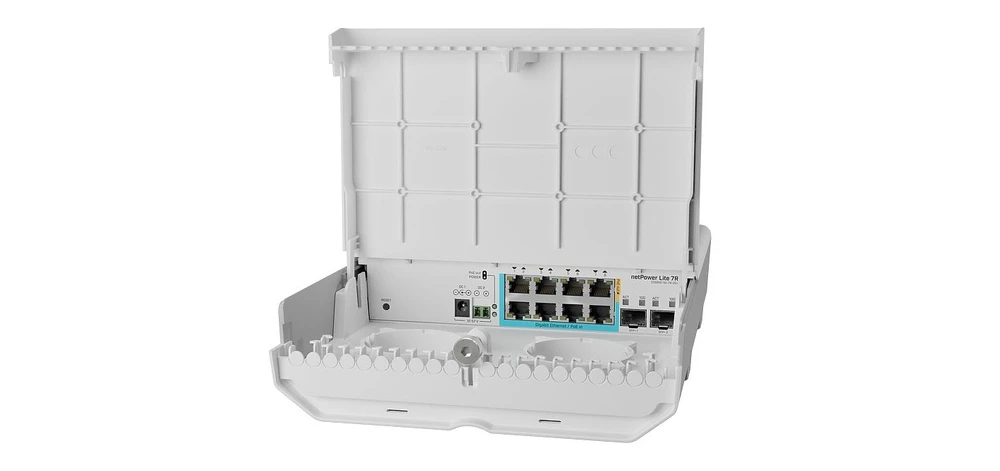Before using MikroTik managed devices, it is recommended to perform a
software update when available. Factory preinstalled software may not provide full functionality and the manufacturer is constantly working on developing management systems. The latest versions are available at the official MikroTik website, and the information can also be found on company forums.
The manufacturer suggests
powering the netPower Lite 7R switches via client points for easier installation site selection and a simpler network infrastructure. The GPEN11 and GPEN21 modules can work here, although they require the purchase of additional power supplies, which increases costs. A separate power supply operating within the range of 12-57 V, and the best recommended 48 V, together with a PoE injector, will cost about 70-100 PLN per one point. It should be noted that power supplies below 28-30W are not recommended for installations that use PoE OUT port to power another device.
An additional issue is that the typical most popular 48 V power supply has a current of 0.3-0.5 A, which may not be sufficient to power the entire
MikroTik netPowerLite 7R GPEN installation, especially supporting another device via the PoE-out port. The switch itself, with three LAN ports and two SFP inserts used, requires 0.31 A at 25 V, as can be observed on the measuring device. Using all ports, a current of just under 0.4 A would be required.
A week-long experiment showed that the
MikroTik netPower Lite 7R switch can be powered without concern by other power sources than the MikroTik GPEN11 or GPEN21. In our lab tests, we tested several popular power supplies that, due to their design, also allow for elegant wall mounting, just like the GPEN11 or GPEN21, and may cost significantly less. You will find a summary of the tests in the table below:
PoE Injector Ubiquiti U-POE-AF
Compatibility - OK
Remarks: reports a problem with cable pairs
2nd PoE power supply Ubiquiti POE-24-24W-G
Compatibility - OK
Notes: -
3. the Ubiquiti POE-24-30W PoE power supply
Compatibility - NO
Notes: -
4. the Ubiquiti POE-50-60W PoE Power Supply
Compatibility - NO
Notes: -
5. MikroTik GPOE 48V power supply
Compatibility - OK
Remarks: reports a problem with cable pairs
It is worth noting that despite the similarity of the equipment, different models of power supplies work with MikroTik netPower 15FR and others with netPower Lite 7R. In the tests the switch worked properly when powered with different compatible power supplies, even of different voltages. No abnormalities were observed when the current power supply failed and automatically switched to the next one. There is no packet loss and transmission speeds remain unchanged at maximum saturation of the Ethernet port. Therefore, it can be said that the equipment allows to provide multiple sources of emergency power, which guarantees high resistance to power problems. At any given moment, the
MikroTik netPower 7R switch uses the power supply with the highest voltage, while the others show low current consumption, remaining in standby mode.
 Click to enlarge!
Click to enlarge!
 Click to enlarge!
Click to enlarge!
 Click to enlarge!
Click to enlarge!
 Click to enlarge!
Click to enlarge!
 Click to enlarge!
Click to enlarge!